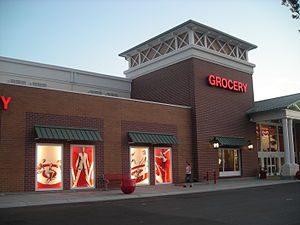Same-Day Order Fullfillment Proves Alluring Yet Elusive for Retailers
Same-day order fulfillment has been the Holy Grail for retailers for some time now. The promise of satisfying consumer urges within hours of a purchase being made is tantalizingly close, yet far from widespread and still fraught with potential pitfalls.

The marketplace is also incredibly competitive. The ascent of ecommerce has attracted both traditional and tech-reliant businesses to the lucrative field, eager to pioneer fulfillment models that will gain traction among online shoppers. Factor in a further layer of disruption from 'mcommerce' - purchases made on smartphones or tablets - and there are a number of moving parts to complicate matters.
Arguably the biggest race being run is between big-box behemoth Walmart and the ubiquitous online retailer Amazon.
Representing a more traditional, bricks-and-mortar approach to satisfying consumer needs, Walmart has seen its dominance chipped away at by its online-only peer over the last decade. After racing back with the establishment of its own web ordering platform, Walmart saw value in maintaining that momentum and began limited experiments with same day order fulfillment. Its 'Walmart To Go' service currently offers same-day delivery options, including groceries, in San Jose and San Francisco, and tests have been conducted in markets around the country for other product types. Last week it announced that its latest expansion would see the service introduced in the Denver area, at a cost of $5 - $10 for same-day delivery.
Meanwhile, Amazon has been moving at a similar rate, in the same space. Its 'Amazon Fresh' service has operated around Seattle for some time, but expansion into the Los Angeles market this past June, and to San Francisco before the year is out, marks a new twist in the drive for sign-ups. The online retailer's preference for subscription models has it offering a 90-day free trial to the service, before graduating members to an annual payment plan of $299, which includes its 'Amazon Prime' service. The latter throws another curve ball to competitors, as it leverages a popular service that offers free 2-day shipping on a wide variety of items.
In reality, the price point has so far remained a secondary factor, behind actual proof of concept. Eventually it will become crucial, but for the moment retailers of any size simply need to demonstrate that they can deliver in such a short time frame. This introduces another hurdle in the form of product type and returns.
Groceries have a clear requirement for timely delivery, given that many items are perishable, so same-day order fulfillment is a valuable service to offer. In the same breath, however, the logistics involved in picking, packing, transporting, and potentially returning significant quantities of fresh, fragile produce are complex to say the least. Waste must be carefully monitored and managed, hence the limited test markets for even these giants of retail, who have a wealth of supply chain expertise at their disposal. As quickly as companies with the vast size and influence of Walmart, Amazon, Home Depot, and Google might want to move into this space, the sheer scope of what they offer makes the process slower.
Interestingly, this could provide a form of competitive advantage to start-ups and retailers with a smaller product range. Once the immediate challenge of creating a supply chain solution that can deliver same-day order fulfillment is achieved, these businesses can potentially expand their offerings more quickly. They can only corner their own particular market niche, of course, but thousands of competitors doing so would present a credible threat to the dominant retailers already mentioned.
The promise of same-day order fulfillment will ensure that we see huge strides in the near future, where the past few years have seen only tentative steps. For the moment, though, the majority of us can still look forward to circling the local big box store for a prime parking spot on grocery day!